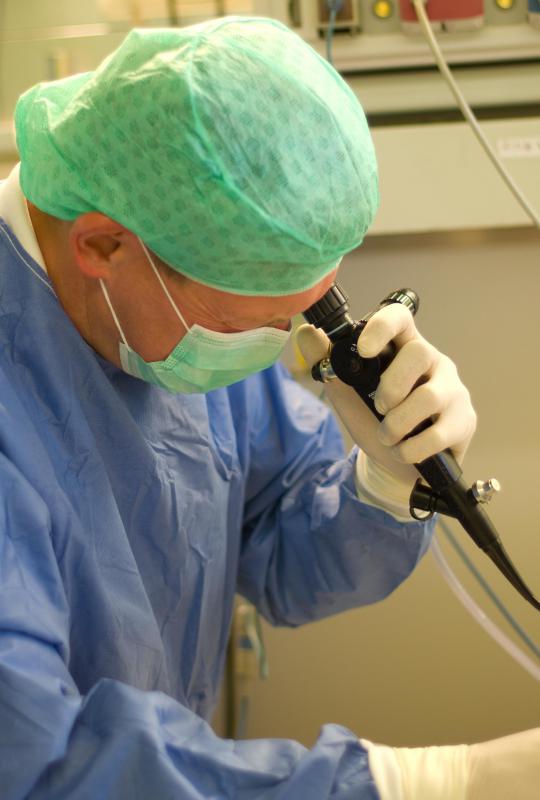At TheHealthBoard, we're committed to delivering accurate, trustworthy information. Our expert-authored content is rigorously fact-checked and sourced from credible authorities. Discover how we uphold the highest standards in providing you with reliable knowledge.
What is a Esophageal Hiatal Hernia?
An esophageal hiatal hernia is also known as a stomach hernia or a hiatus hernia. It is a condition in which part of the stomach protrudes into the chest area through the opening of the diaphragm, known as the hiatus. There are two types of esophageal hiatal hernias, known as sliding esophageal hiatal hernias and paraesophageal hiatal hernias. A sliding hiatal hernia generally is able to move back and forth through the diaphragm. A paraesophageal hiatal hernia, on the other hand, moves up and gets lodged in the area next to the esophagus.
The cause of an esophageal hiatal hernia is unknown, but it has been linked to an abnormally high pressure in the abdomen because of pregnancy, excess weight, coughing, sneezing and difficulties during bowel movements. Injuries to the area, heavy lifting, bending and slouching can cause the diaphragm to become weak and often can result in a hernia. The condition is also hereditary, in which cases the victims might be born with larger or weaker diaphragms.

The sliding hiatal hernia is the most common, accounting for more than 90 percent of all esophageal hernias. Usually there are no symptoms present in smaller hernias, but when the symptoms do appear, they are very similar to the symptoms of gastroesophageal reflux disease (GERD). The symptoms such as acid reflux, heartburn and nausea can be treated with medications as well as lifestyle changes such as a healthy diet and regular exercise. In severe cases, surgery is performed to bring the stomach back into the abdomen area, and the esophageal hiatus is tightened to prevent a future hernia.

A paraesophageal hiatal hernia is a rare condition, but by the time the symptoms are present, it can become serious. This type of herniation can press up against the esophagus, thus making it difficult for the food to go down. It can also result in ulcers, chest pains and difficulty breathing, as well as in an obstructed blood flow to the protruded part of the stomach. As with a sliding esophageal hiatal hernia, surgery can be performed to bring the stomach back into the abdomen area.

Although some of the symptoms of an esophageal hiatal hernia are harmless and can resemble many other health problems, they should be checked by a healthcare professional to determine the cause of the symptoms. An esophageal hiatal hernia can be diagnosed with X-rays of the esophagus, stomach and duodenum, which is the first part of the small intestine. Endoscopy also is an effective way to detect a hiatal hernia.
AS FEATURED ON:
AS FEATURED ON:















Discuss this Article
Post your comments